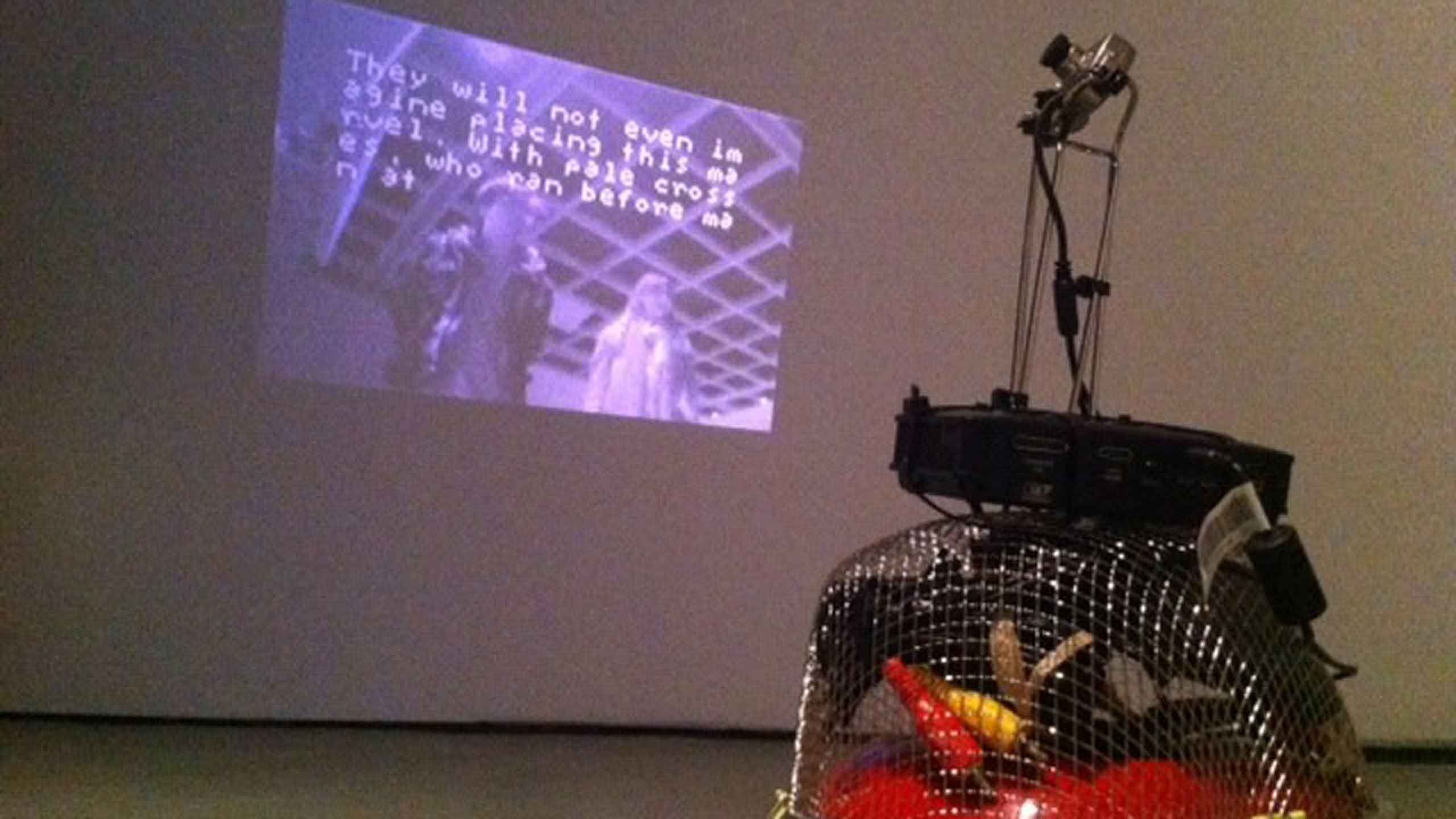By Swikar Oli
When McMaster University’s David Harris Smith approached Ryerson Professor Frauke Zeller to collaborate on a project for an art exhibition, they knew it had to deal with robots. For Zeller, the reason to spark the dialogue is clear, ”We can’t live without robots anymore.”
Between Smith’s artistic and Zeller’s computational linguistics background, the pair came up with Kulturbot, a motorized art critic that rolls around art galleries sputtering out its printed review on artistic creations and blank walls alike. Kulturbot’s output follows syntactical order—but the critiques, as well as its movements, rely entirely on randomness.
“It would just sweep through the gallery basically and take pictures,” Zeller said. “Then we made sure it would tweet those pictures, and the captions for the pictures would be text generated automatically by a computer program that takes and puts together words by itself.”
The captions are randomly generated from Italian art theorist and poet Filippo Marianetti’s The Manifesto of Futurism.
The result: “Sentences that are grammatically correct that don’t necessarily make any sense,” Zeller said. “And we said that’s like an art critic.”
Kulturbot’s Twitter account, which goes as far back as November 2014, contains over a thousand captions, most of which may not necessarily cohere without some slant on the part of a crafty reader. Tweets like “immense mouthful of strength in a useless sweat,” and “Best part of your strength, love, courage and our first time in our insolent spurts of creaking jaws giving in the waste paper with beings,” may reveal more about the interpreter than about Kulturbot’s incidental personality.
But draw out bits from the text and Kulturbot’s tweets show even familiar words can gain descriptions that give it a new stamp (“red hot poker of joy,” “snorting machine gun” and “victory gutter” are a striking few).
Zeller said people’s reactions have been “very, very positive” in art galleries. Even among all the art, the Roomba’d visitor is an eye-catcher for curious patrons. For starters, Kulturbot’s look, even for an art critic, is distinct. It’s got a pasta-strainer dome and a lemon-juicer hat. A camera lens peeks out of its chrome strainer and the thermal printer beside it spits out receipt paper that likes to wag as the robot wheels around.
Everything about the creation, from computation and look to the underlying intent for its making, seems designed to invite discussion. People approach Kulturbot with questions in mind, but just as quickly, Zeller says, they know to pose those questions to themselves. “People ask us things like, “So how does it know that it’s art,’ right? And we really didn’t say anything, and they said, ‘Oh yeah, you’re right. What is art actually?’”
Zeller finds it’s important for us to consider how we feel about robots. As a researcher in social robotics, she sees that people are easily fond of robots. “We build these robots with very simple means, and still people were really intrigued and delighted and started to talk about it and what it actually meant,” she added.
Zeller wants to observe our attitudes during this transition period—when consumer robotics begins incorporating into our daily lives—and use it empower people. She wants to know how robots can “achieve behavioural change in [subjects].”
As the service and social robot industry grows, Zeller also wants us to consider the roles we want them to fill. “Usually, we tell people what to do with technology we design, but it should be the other way around,” Zeller said. “People should appropriate technology and say, ‘I wanna do this. I wanna do that. This is how I want to use a robot.’”
The pervasiveness of robots in human life seems only an inevitability. After the success of HitchBOT, Kulturbot’s famous cousin that made international headlines while travelling more than 6000 km by getting rides from travellers, Zeller received an offer to collaborate with Airbus on a companion robot for people with truly out-of-this-world loneliness: astronauts.











Leave a Reply